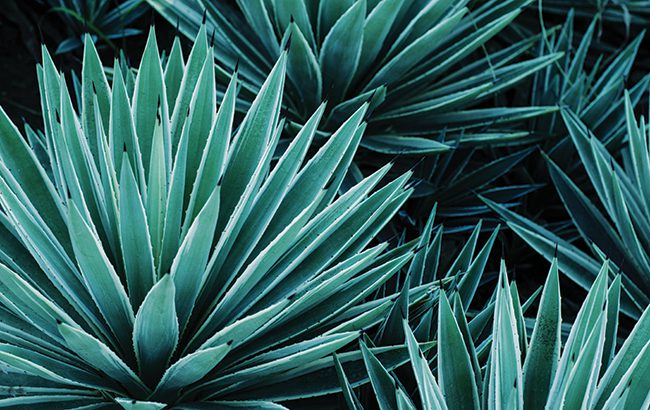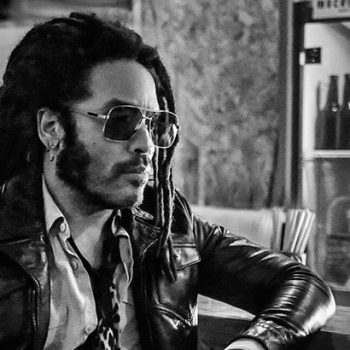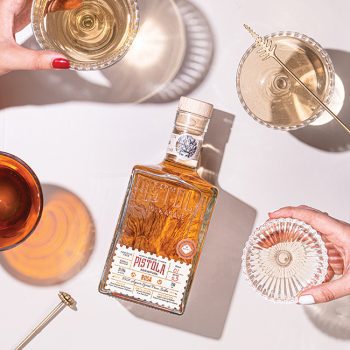Alternative agave spirits on the rise
By Clinton CawoodWhile Tequila and mezcal lead the way when it comes to agave spirits, there are others that are ready to be explored by keen connoisseurs, including a range of expressions made outside of Mexico.

*This feature was originally published in the July 2023 edition of The Spirits Business magazine.
We’re living in the age of agave spirits. Led by the US market, Tequila continues to become increasingly popular, more prevalent, and more premium, with mezcal following at its heels. As these two continue to grow, there are a variety of other agave spirits that have been waiting in the wings, both from Mexico and further afield.
Mexico alone has a number of other agave spirits to offer, each with their own denomination of origin (DO), namely raicilla, bacanora, and sotol – the latter not technically made from agave but usually included in the category. These other agave spirit DOs are already seeing significant growth, albeit from relatively small volumes.
Bacanora, exclusively made in Mexico’s Sonora state, saw global volumes increase by 21% between 2021 and 2022, according to IWSR Drinks Market Analysis. Raicilla, produced in Tequila’s heartland of Jalisco, grew by 15% over the same period, while sotol, made from dasylirion, or desert spoon, rose by 17%.
Like their more prevalent Mexican spirits cousins, Tequila and mezcal, these three are flourishing in the US, with the IWSR reporting a collective volume increase of 40% in 2022. Global volumes of the trio are expected to rise by between 6% and 8% CAGR 2022-2027.

Meanwhile, if celebrity-backed brands are any indication of a spirit’s status on the world stage, then sotol’s time has come, with the recent launch of Nocheluna, a partnership between Lenny Kravitz, Pernod Ricard, and Casa Lumbre. The brand was introduced to the European market in May, following its launch in Mexico and the US in 2022.
“Sotol as a category has been slowly building momentum, and we believe that with more focus it can push out of obscurity and become a more commonly known Mexican spirit,” says Casa Lumbre brand ambassador Jon Anders Fjeldsrud.
As these spirits gain prominence, there’s work to be done when it comes to educating people about them properly, adds Fjeldsrud. “Sotol is part of the broad category of spirits from Mexico, but it’s not an agave spirit,” he says. “It can be made like traditional mezcal, but the plant is different from the agaves, so there is a lot of work in promoting it correctly.”
More broadly, Fjeldsrud sees potential for the country’s spirits beyond the two most prominent. “Tequila and mezcal will be the bigger categories, but these other Mexican spirits will become more popular, and more common,” he says.
Jose Luis Hermoso, research director for IWSR Drinks Market Analysis, sees a future for these up-and-coming spirits too. “As agave spirits continue to gain traction, the beverage alcohol industry can expect to see more innovation pushing the traditional boundaries and definition of this category,” he predicts.
“An industrialisation of alternative agave plants to produce spirit of a recognised quality could erode the dominance of Tequila in the agave spirits space in the longer term. After all, only 20 years ago consumers worldwide would turn to Scotch or Bourbon when thinking about whisky, but now the choice has expanded widely.”
Raicilla, bacanora and beyond
Time will tell whether spirits like raicilla and bacanora can challenge Tequila’s status, but they’re undoubtedly making headway. “As people understand agave spirits more thoroughly, there will be wider opportunities for agave spirits to flourish,” says Paola Bridge-Collins, agave brand ambassador for Amber Beverage UK. “They deserve to be recognised, and in the future could start to benefit in the same way that mezcal has.” She believes there’s work to be done when it comes to the most well-known agave spirits. “For the foreseeable future, Tequila and mezcal will dominate. It’s a necessary first step for consumers, and, to some extent, the trade to explore the potential of these spirits first,” she says. “In the US the understanding of this category is sophisticated, but there remains a big task to be done, in the UK and elsewhere, to help consumers understand that these are spirits with a terroir, and which come from the land.”
There’s no doubt that growing appreciation and understanding of both Tequila and mezcal are fuelling interest in Mexico’s other agave spirits. For Carina Soto, a director of Mexican spirit bottler and importer El Destilado, the growth of mezcal in particular is key. “Mezcal has shown that a spirit can be very similar to wine, with different varieties and regions, and different methods of production,” she says. “It has shown the wider world what these agave spirits can be.”
The majority of El Destilado’s range consists of agave spirits – mezcals in everything but certification, primarily because they are bottled outside of Mexico. But Soto intends to add other Mexican agave spirits to the range. “We haven’t yet, but we probably will for next year. I love what they’re doing in Jalisco with raicilla,” she says. “There are already beautiful brands there that are doing a great job, but we’ll keep looking, and will investigate other states for sure.”
For Soto, these spirits are inextricably linked with their country of origin, and its gastronomy in particular. “The success of these spirits goes hand in hand with the way they’re consumed, and with the way that Mexican cuisine is considered nowadays – you drink mezcal when you eat Mexican food at a high level,” she says. “For agave distillates from other countries, it’s a very different story to tell. You can’t explain it in the same way.”
Agave spirits are increasingly being made outside of Mexico’s borders, riding on the popularity of Tequila and mezcal, but arguably bringing something of their own to the category too. “Over a longer timescale, these could challenge Tequila in meeting growing global agave spirits demand,” says Hermoso. “Agave spirits producers outside of Mexico are unencumbered by the extensive regulation controlling the production of spirits such as Tequila and mezcal. Outside of these definitions, producers can showcase their creativity, and potentially push the boundaries of flavour profiles associated with agave spirits.”
For Sarah Kennan, founder of South African agave spirit brand Leonista, there’s a parallel to be made with the whisky category. “Agave spirits are in demand the same way Japanese whisky is in demand. Scotland built the category, and now consumers are open to whiskies being made in new places with their own special flavours,” she says.
Kennan believes that Leonista offers something different, by virtue of its place of origin. “The agave that it’s made from has a unique terroir, having been grown wild in the Karoo in South Africa. You’re not going to find that flavour anywhere else in the world.”
That idea of expressing terroir through agave spirits is also key to the Australian Agave Project, created by Top Shelf Group. According to the project’s website, ‘it will showcase to the world what agave is capable of – a truly regional, expressive and distinctive profile that exemplifies the very best of Australian terroir’.
Kennan acknowledges that reception for Leonista is also linked with perception of the Mexican spirits that have gone before it. “Consumers understand that if it has ‘100% agave’ on the bottle, then it can be just as high quality as those made in Mexico.”
 Similarities and differences
Similarities and differences
In India, relatively recent entrant Maya Pistola Agavepura is also made from locally-grown agave. “The key is to celebrate both the similarities of these agave spirits to Tequila and mezcal, as well as the inherent differences,” says founder and managing director Rakshay Dhariwal. “While it may be challenging to directly compete with the reputation and heritage of Tequila and mezcal, there is potential to carve out a niche market by focusing on quality, authenticity, and distinct flavour profiles.”
Dhariwal believes the growth of agave spirits made outside of Mexico has the potential to benefit the broader category.
“As consumers explore different agave-based products, their appreciation for the category as a whole expands,” he says. “As we educate people about Pistola in India, we are simultaneously educating people about all agave spirits, and it helps to build awareness and create interest in all of these categories.”
Sebastian Dresel, executive director of marketing for German agave spirit Selva Negra, agrees. He believes that products like Selva Negra, made in Germany from imported agave extract, can help to introduce new consumers to the category.
“We are not only addressing Tequila and mezcal drinkers, but people who have not yet dared to enter this category,” he says. “We see ourselves as ambassadors for the category, and try to get people excited about the agave.”
There’s certainly excitement, not just in Mexico, but with producers cropping up all over the world. And with Mexico’s established categories of Tequila and mezcal continuing to thrive too, the broader agave spirits category is showing no signs of slowing down any time soon.
Related news
Cocktail stories: The Name of the Samurai, Nightjar

 Similarities and differences
Similarities and differences